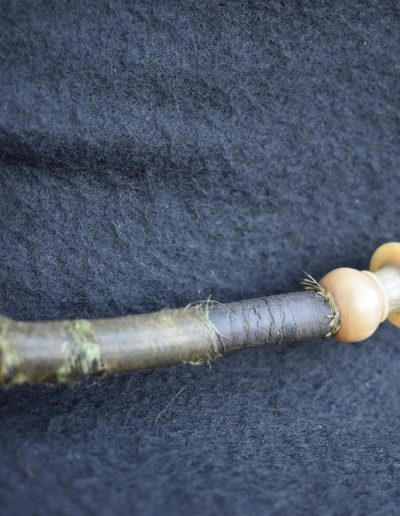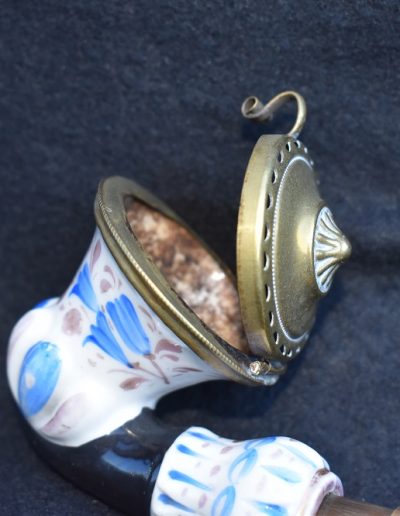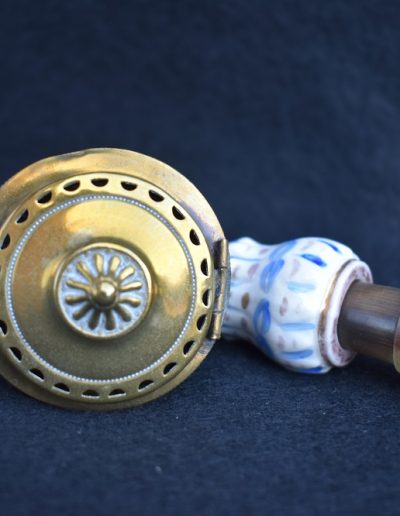Pipe Chiboek Bohemia 1840-1870.
L 30 cm
€ 120,00
Prijs incl. 6% BTW & Verzendingskosten
Meer informatie
Tobacco was taken to Europe 26 years after Columbus discovered America (1492). The seamen of Columbus soon started smoking tobacco pipes themselves along the way. One of the main reasons was the hunger suppressant effect. After the arrival of Columbus in Europe, the spread of tobacco spread around the world very quickly. Due to the very rapid growth of pipe factories, a weekly pipe market is created in Amsterdam. The success of the clay pipes quickly spread to other cities, including Gouda. As the technique of pipe making and baking techniques improved, the pipes became longer and the stems thinner. Clay pipes are simple and primarily utilitarian from the early nineteenth century. Tobacco pipes made of porcelain are of a completely different order. They only emerged in the eighteenth century with the rise of European porcelain production and were initially a rare and very luxurious item. After the French Revolution and the Napoleonic unrest century, that situation changes, the nineteenth century will bring major changes. Both industries are expanding their workshops and increasing their production. The interaction between the porcelain figural pipe and the clay pipe changes over the course of half a century from a positive inspiration to a less successful almost marginal expression. Shown is a tobacco pipe of (cast) porcelain with a round oval constricted bowl, Chiboek model with funnel-shaped bowl, placed on a weighted base with grunt-shaped serrations. Curved base in black without button heel. Slightly ascending porcelain handle with baluster-shaped cuff with constrictions at the top and bottom and a chain motif in light blue in the center. Thinned end with gold plated trim for mounting. Under the white glaze there is a floral hand painting in underglaze light blue and light brown with overglaze gold on the shell. The grunts are also colored. Brass valve cover with clamping spring with perforations all around and a raised circular knob in the center. Inside, the boiler is lined with moisture-absorbing material and with an opening in the bottom. There are tar residues. In the porcelain stem there is connection for an original tan buffalo horn rudder, with hexagonal middle part, with dark brown horn disc with serrated edge, with ivory screw tap halfway, with pliable black cloth limp, knob and disc, and flat horn mouthpiece with knob-shaped end. This pipe is not marked. Dating remains difficult, but we estimate the date between 1840 and 1870.
Condition: very good overall.









Reviews